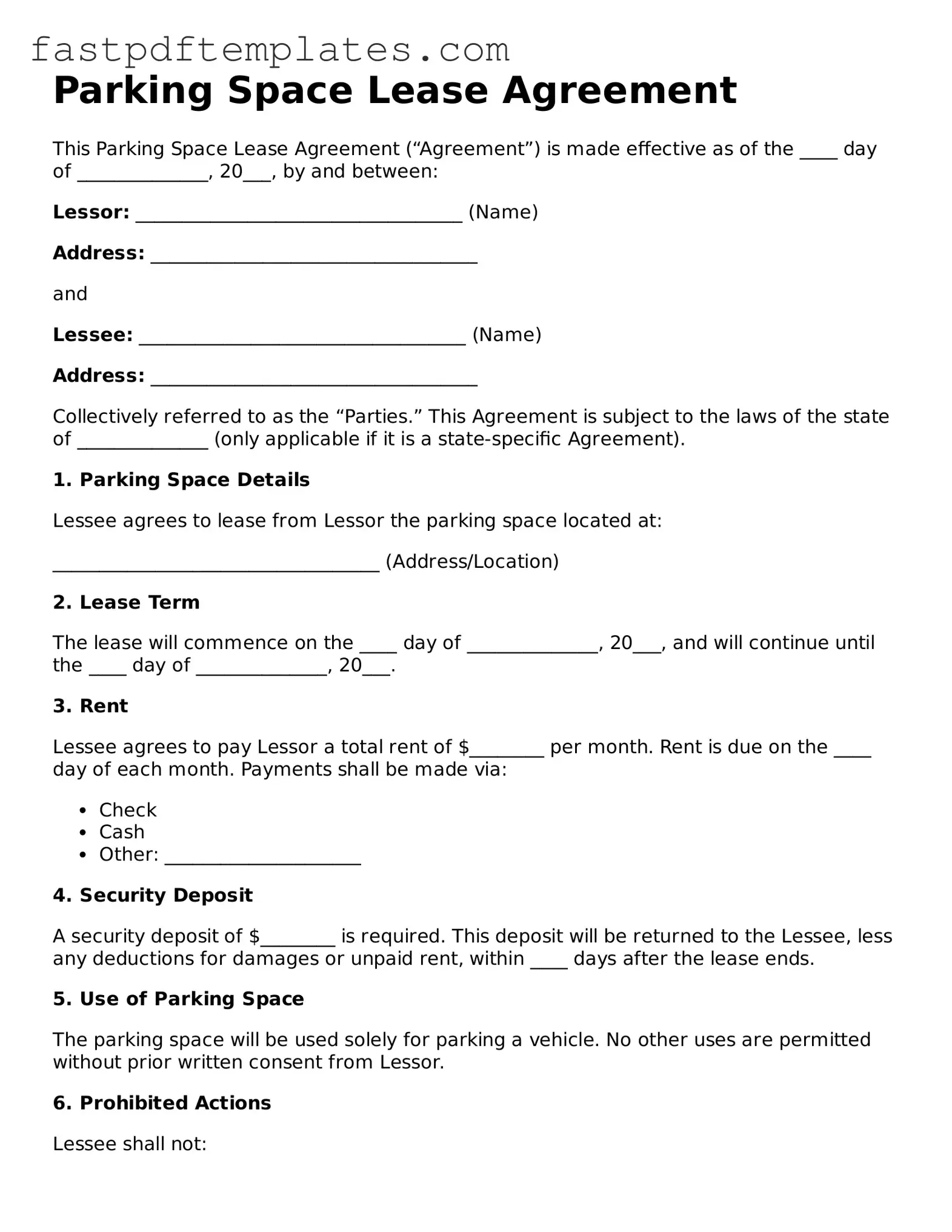Parking Space Lease Agreement
This Parking Space Lease Agreement (“Agreement”) is made effective as of the ____ day of ______________, 20___, by and between:
Lessor: ___________________________________ (Name)
Address: ___________________________________
and
Lessee: ___________________________________ (Name)
Address: ___________________________________
Collectively referred to as the “Parties.” This Agreement is subject to the laws of the state of ______________ (only applicable if it is a state-specific Agreement).
1. Parking Space Details
Lessee agrees to lease from Lessor the parking space located at:
___________________________________ (Address/Location)
2. Lease Term
The lease will commence on the ____ day of ______________, 20___, and will continue until the ____ day of ______________, 20___.
3. Rent
Lessee agrees to pay Lessor a total rent of $________ per month. Rent is due on the ____ day of each month. Payments shall be made via:
- Check
- Cash
- Other: _____________________
4. Security Deposit
A security deposit of $________ is required. This deposit will be returned to the Lessee, less any deductions for damages or unpaid rent, within ____ days after the lease ends.
5. Use of Parking Space
The parking space will be used solely for parking a vehicle. No other uses are permitted without prior written consent from Lessor.
6. Prohibited Actions
Lessee shall not:
- Store any items in the parking space.
- Sublease or transfer the lease without written approval from Lessor.
- Engage in any illegal activities while using the space.
7. Termination
Either party may terminate this Agreement by providing ____ days' written notice to the other party. Upon termination, the Lessee must vacate the parking space and return any keys or access methods, if applicable.
8. Governing Law
This Agreement shall be governed by the laws of the state of ______________.
9. Signatures
By signing below, both Parties agree to the terms set forth in this Parking Space Lease Agreement.
Lessor Signature: _______________________________
Date: ________________________
Lessee Signature: ______________________________
Date: ________________________
Each party acknowledges they have read and understood this Agreement.
